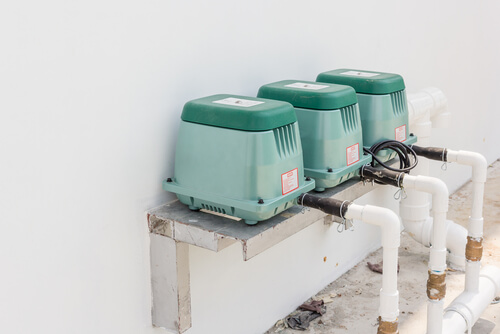Air pumps for septic tanks produce oxygen needed to help an aerobic septic system break down solids and waste in the tank. If these innovative air pumps cannot perform their jobs, it could cause a domino effect on your entire system, leading to more expensive repairs down the line.
Everything You Need to Know About Air Pumps for Septic Tanks
 Before identifying what happens when a septic aerator pump stops working, it’s essential to understand how it works, what it looks like, and where it’s located. Here is a brief overview of septic aerator pumps and how they help aerobic septic systems operate:
Before identifying what happens when a septic aerator pump stops working, it’s essential to understand how it works, what it looks like, and where it’s located. Here is a brief overview of septic aerator pumps and how they help aerobic septic systems operate:
How Septic Air Pumps Work
A septic aerator pumps oxygen into the tank, which changes the tank into an aerobic environment (more on that later). This aerobic atmosphere activates bacteria that help break down solids and waste. The aerator’s job makes it easier for the other working parts of the system to break down the solids before the wastewater is transferred to secondary tanks or released to a drain field.
What Does a Septic Aerator Pump Look Like?
Since it’s best to think of aerators as air pumps, these mechanisms generally have a box-like appearance. Much like any home appliance, the appearance can differ by brand. However, one commonality for all aerators are the air vents usually located on the side of the unit. These vents allow air to make its way into the pump before the transfer process begins.
Where is My Septic Air Pump Located?
Given that aerobic septic systems rely on the air provided by the aerator, this critical working tool is located above the ground, where oxygen is easily accessible. This location is optimal for transferring air down through a pipe and into the aerobic tank where it’s needed.
Warning Signs of a Septic Air Pump Malfunction
Given the aerator’s responsibility of providing oxygen, the whole aerobic septic system could be flawed without a proper aerator. Here are a few of the signals that could mean your system’s aerator could be insufficient:
- Poor Air Pressure – This is the most obvious sign that something is wrong with your system’s aerator. If the tank’s air pressure levels aren’t normal, the aerator isn’t pumping correctly pressurized oxygen into the tank.
- Aerator Filter – Sometimes, property owners are unaware that their system’s aerator has a filter. If a filter gets clogged, it will restrict airflow, slowing the decomposition process.
- Alarm – Every aerobic septic system has an alarm. Much like the check engine light on a car, this alarm could mean something wrong with the aerator. On the other hand, it could also mean an issue with something else within your system. Either way, you should contact a septic technician to come out and assess the reason behind the alarm being triggered.
Aerobic vs. Anaerobic Septic Systems
When it comes to septic systems, there are two types of options: aerobic and anaerobic. When finding the right septic solution for your property, it’s essential to consider both of these options and the differences that each brings to the table.
Anaerobic Septic Systems
The most significant difference in anaerobic systems is the exclusion of air in the tank. These traditional septic systems work with bacteria that don’t need oxygen to survive in the tank. This comes at a cost – since oxygen isn’t needed, anaerobic bacteria in the tank aren’t as effective at breaking down certain types of solids like human waste. One reason many anaerobic septic systems are sought after is due to the system’s low operating expense. This, of course, comes at the risk of having to replace the entire system sooner.
Aerobic Septic Systems
Effective due to the aerator pumping air into the tank that brings life to cleaning bacteria, aerobic septic systems are effective in many ways. By having a septic system that uses beneficial enzymes to decompose solids, you’re only increasing the amount of positive bacteria growth in the tank as a whole. Another positive comes in the form of the size of an aerobic system’s drain fields. Unlike anaerobic systems, aerobic systems require a much smaller drainage field due to their ability to treat the tank’s wastewater completely. This saves property owners space and money when installing a septic system.
Find Your Septic Aerator Solution
When it comes to your property’s septic aerator pump, you’ll want to ensure it’s maintained by some of the industry’s top septic professionals. At Mountain Septic, our team can diagnose your aerator’s problems and make the necessary repairs to help get you and your property back to a routine.
For more information on Mountain Septic and our septic aerator repair services, feel free to reach us via phone today: (970) 238-7884.

